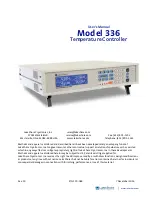
TC1796
System Units (Vol. 1 of 2)
Reset and Boot Operation
User’s Manual
4-15
V2.0, 2007-07
Reset, V2.0
Internal PFLASH Boot
After execution of the start-up code, two PFLASH boot options exist:
•
PFLASH boot option 1 directly jumps to the internal flash.
•
PFLASH boot option 2 (Alternate Boot Mode) first checks the flash via checksum
calculation, whether one of two pre-defined entry locations contain valid code and
jumps to a start address as defined by the ABM header.
4.2.7.2
Debug Boot Options
The debug boot options are invoked when BRKIN is active (at low level). The TC1796
has three options for booting into debug operation:
•
Tri-state chip
•
Starting code execution from external emulator memory
•
Execution of an endless (stop) loop
Tri-state Chip
If HWCFG[3:0] = 0000
B
, all pins of the TC1796 are put into tri-state mode. In this mode,
all pins are deactivated, including the oscillator, and internal circuitry is held in a low-
power mode. This mode allows e.g. board level test equipment or emulator probes to
actively drive lines which are connected to TC1796 pins.
Emulator Memory Start
If HWCFG[3:0] = 1000
B
, the TC1796 starts execution out of the external memory space
using the EBU and the chip select line CSCOMB.
Execute Endless Loop
If a reserved boot selection is detected for HWCFG[3:0] with BRKIN = 0, the TC1796
stops further Boot ROM control operations and enters into an endless loop by executing
a jump instruction to itself (can be aborted by a WDT reset).
















































